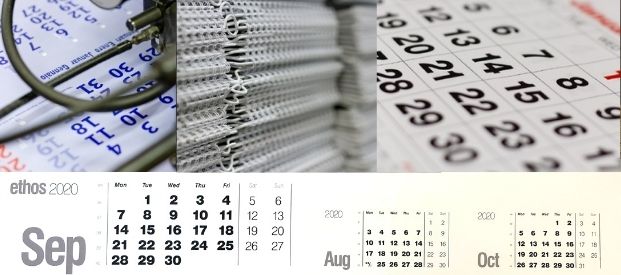Why 7 Days a Week, 12 Months a Year?
We all know that there are seven days in a week and 12 months in a year. A quick glance at the calendar confirms these facts. But why should this be? And why should the number of days in each month vary between 28 and 31 with no apparent logic behind the numbers? Our calendar is based on astronomy and is calculated by the length of time the earth takes to go round the sun. But have we come up with the best divisions or is there a better way to organise our days, weeks and months?
Why seven days?
It’s a well-known fact that each week contains seven days. But why shouldn’t we have an eight-day week or a ten-day week with three weeks fitting neatly into a 30-day month?
The early Romans set their weeks in an eight-day cycle to suit their regular market days. Many years later, after the French Revolution, a new calendar experimented with three ten-day divisions (called décades) in each month. In this secular calendar, instead of Saints’ Days and Christian festivals, each of the 360 days in the year was named after a seed, tree, flower, fruit, animal or a tool. The French Republican Calendar with its ten-day week was used for a few years until it was abandoned in 1806.
The calendar used throughout most of the world – the Gregorian calendar – follows the example of the ancient Babylonians who established the seven-day week based on the cycles of the moon, seven days being the closest to one quarter of the time the moon takes to orbit the earth. The seven-day week has stood the test of time and still remains the preferred division in use today.
How about a ten-month year?
Ten months per year worked well enough for the ancient Romans. They spread the ten months across 304 days and ran their year from March to December. It was not until 700 BCE that they added January and February to make twelve months – 355 days – in a year. Later still, Julius Caesar reformed the calendar, adding ten days and a leap year every four years to bring it closer to the solar year. His Julian calendar was in use for many centuries from 45 BCE until it was gradually replaced from 1582 onwards by the more accurate Gregorian calendar.
If you ever wondered why the names of the last four months of our year (September to December) stem from Latin numbers which don’t correspond with their position in the year, you’ll find the answer in that ancient ten-month Roman calendar. So, for example, our twelfth month December stems from the Latin decem, meaning ten, because in those very early times it was the last or tenth month of the year.
Would a 13-month year be more practical?
In the early 20th century, Moses B Cotsworth designed a calendar with 13 months, each with 28 days. He added an extra month in the summer and named it Sol. George Eastman, founder of Eastman Kodak, liked the convenience of the 13-month calendar and devised a similar system which his entire company used for 65 years before they eventually abandoned it in 1989.
The idea of the 13-month year never really caught on, failing mainly for religious reasons as it did not always maintain Sundays at weekends.
How many days in the month?
Even if we agree that seven days in the week and 12 months in the year work best for us, there is still one more aspect of our calendar up for scrutiny. Why do we have such an apparently random variation between 28 and 31 days in each month? Should we tidy up the months so that each quarter year is the same length? Wouldn’t that be a great idea for economists, accountants and bankers?
Richard Conn Henry, an astrophysicist at John Hopkins University and his colleague, economist Steve Hanke addressed this by creating a calendar called the Hanke-Henry Permanent Calendar which has two 30-day months followed by one 31-day month each quarter, meaning that each year has four equal quarters of 91 days. To keep the calendar in line with the solar year and deal with seasonal drift, an extra week called Xtr would be added every five or six years.
Not only would this make life easier for the economists, but it would be easier for event organisers too, as it means that every year the date falls on the same day: so, for example, the Olympics, Wimbledon, and all other events would always fall on the same dates and Christmas Day would always be on a Sunday.
Hanke and Henry proposed that this efficient new calendar should be introduced on 1 January 2017 but the reformers failed to convince the world to make the change. As well as not being as accurate as the current Gregorian calendar, there were many psychological barriers to having the same date on the same date each year; not least of which was the fact that if your birthday fell on a Wednesday, it would always be on a Wednesday and never at the weekend – a situation which many of us seemed reluctant to accept!
It seems that for now, despite its eccentricities, the calendar as we know it is here to stay.










